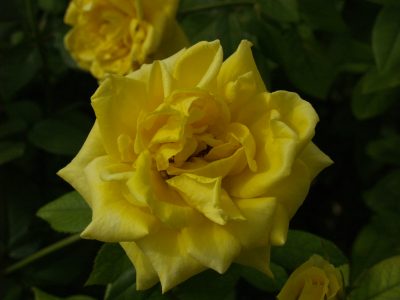When do we prune roses and how?
In our warm winters, roses can be pretty much evergreen. Freeze damage and just plain old leaves need to be cut off in February, along with canes that are dead. This is when we cut back to shape and downsize, too.
First, we have to be familiar with our general weather patterns, and shoot for the window between non-growth and growth. With most roses, this isn’t too difficult, since you can almost watch the buds swelling, just beneath the surface of the stems.
Most years, it’s a pretty safe bet that bud-swelling is going to happen sometime before the end of February, so that’s why we prune around Valentine’s Day. In warm winters, it happens earlier. Most likely, you’ll be fine to prune then. But, we never know what will happen, so it’s best to wait a bit. Plus, when buds are really coming out in earnest, you know where to prune.
It’s very important to prune buds that will grow outward, rather than toward the interior of the plant, in order to improve air circulation in the center. Cut the stem to about 1/4 inch above the bud that’s growing outwards.
Rose leaves usually have a lot of red in them, so frost and wind damage, which expose the red pigments, and even just normal leaf-drop in the winter, are often confused as disease issues. “Normal” color patterns in leaves will be very symmetrical and usually first appear as a red mottling near the margins. Diseased leaves will appear splotchy and the pattern will normally not be symmetrical.
And one more note on pruning: Vining roses should not be pruned until after they’ve flowered.
Shrub roses, such as Knock Out, may be pruned anytime, to keep them in shape. They can also be sheared–their bud direction doesn’t matter.
Deadhead after each flush of blooming this spring. In May, do a light pruning. Avoid harsh pruning in summer but you can tidy up. In early September, again prune lightly.

 Michael Shoup
Michael Shoup Daphne Richards
Daphne Richards
 Merrideth Jiles
Merrideth Jiles